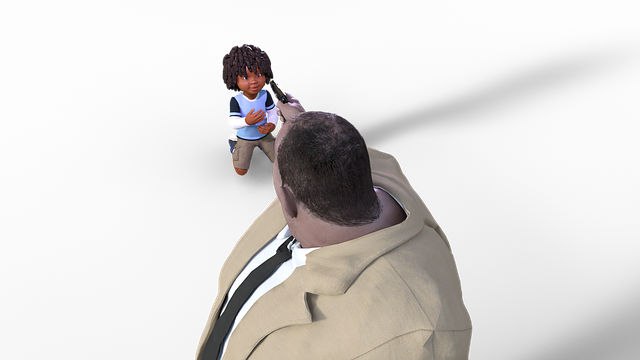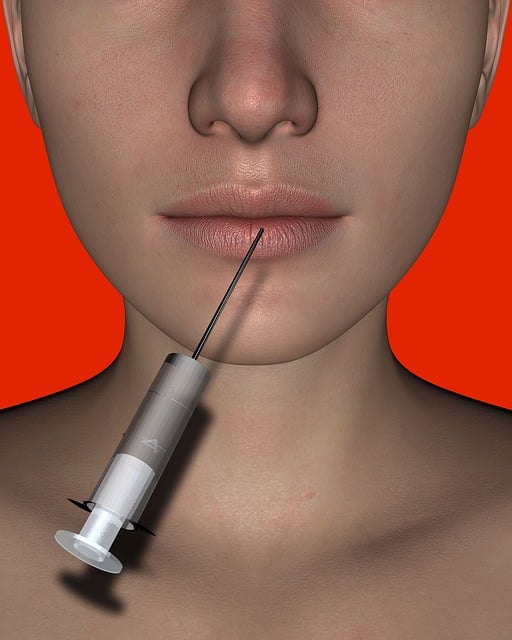Botox and dermal fillers target different aspects of aging skin on the forehead. Botox relaxes muscles to reduce dynamic expression lines, while dermal fillers add volume and smooth deep wrinkles using hyaluronic acid or collagen. Dermal fillers last longer (up to 2 years) but are more expensive; Botox offers subtle results and repeat injections are needed. Choice depends on individual needs: muscle relaxation vs skin volume/elasticity improvement.
“Considering pain-free options for tackling forehead lines? Explore the world of Botox and dermal fillers, two popular non-invasive treatments revolutionizing anti-aging. This comprehensive guide delves into how these substances work their magic, offering benefits like muscle relaxation and skin volumization. We compare Botox vs. dermal fillers, helping you choose the best treatment for your concerns. Expect a painless experience, long-lasting results, and expert insights on maintenance and budgeting.”
Understanding Botox and Dermal Fillers for Forehead Lines

Botox and dermal fillers are two popular non-surgical cosmetic procedures used to address signs of aging, particularly forehead lines and wrinkles. While both aim to smooth out skin, they work in different ways. Botox, a type of protein produced by bacteria, temporarily paralyzes muscles, preventing them from contracting and causing wrinkles. This results in a more youthful appearance by reducing the depth of expression lines on the forehead and between the eyebrows.
On the other hand, dermal fillers are substances injected into the skin to add volume and improve facial contours. These fillers, often made of hyaluronic acid or collagen, smoothen out deep wrinkles and creases by filling in the spaces between skin cells. Unlike Botox, which targets muscle activity, dermal fillers provide immediate results by restoring the skin’s natural elasticity and plumping up problem areas. The choice between Botox vs. dermal fillers depends on individual preferences, desired outcomes, and the specific concerns one wishes to address regarding forehead lines.
Benefits of Non-Invasive Forehead Wrinkle Treatment Options

Non-invasive treatments for forehead wrinkles, such as Botox and dermal fillers, offer significant advantages over more aggressive procedures. Both options provide effective results with minimal downtime, making them popular choices for individuals seeking to reduce the appearance of fine lines and wrinkles without surgery.
Botox, a neurotoxin, temporarily paralyzes muscles, smooths out dynamic lines, and prevents new wrinkles from forming. Dermal fillers, on the other hand, add volume and hydration to the skin by injecting hyaluronic acid or collagen into targeted areas. When compared to Botox, dermal fillers can provide longer-lasting results, up to two years or more, depending on the product used. This makes them a suitable option for those wanting a more permanent solution to forehead wrinkles.
How Botox Works to Relax Muscle Activity

Botox, a popular cosmetic treatment, works its magic by targeting specific muscles in the forehead and relaxing their activity. This process involves injecting a small amount of botulinum toxin into the muscles, which blocks nerve signals that trigger muscle contraction. By preventing these contractions, Botox smoothens out the skin’s surface, reducing the appearance of fine lines and wrinkles associated with facial expressions.
Unlike dermal fillers that add volume to the skin, Botox operates by minimizing muscle movement, providing a more subtle yet effective result. This non-invasive procedure is a preferred choice for those seeking to alleviate dynamic wrinkles caused by frequent frowning or squinting without undergoing surgery or extensive recovery periods often associated with other cosmetic treatments, including dermal fillers.
Dermal Fillers: A Deeper Look at Their Role in Skin Volumization

Dermal fillers and Botox are both popular cosmetic treatments, but they serve different purposes in skin enhancement. While Botox is renowned for its ability to temporarily smooth fine lines and wrinkles by relaxing muscles, dermal fillers focus on adding volume and plumping up specific areas of the face. These fillers are composed of hyaluronic acid or collagen, which integrates into the skin to fill out depressions and enhance facial contours.
In the comparison between Botox vs. dermal fillers, each has its advantages. Dermal fillers offer more immediate results in terms of skin volumization and can last for several months to a year, depending on the product used. They are ideal for individuals seeking a more substantial improvement in facial structure. In contrast, Botox provides subtle yet effective smoothing of wrinkles and is preferred by those aiming for a natural, relaxed appearance rather than dramatic changes.
Selecting the Right Treatment for Your Specific Forehead Concerns

When considering treatments for forehead lines, understanding the difference between Botox and dermal fillers is key. Both are popular choices for smoothing expression lines, but they work in distinct ways. Botox, a neurotoxin, relaxes muscles to prevent contraction, reducing the appearance of dynamic wrinkles. It’s ideal for fine lines and frown lines caused by facial movements. Dermal fillers, on the other hand, add volume and lift to the skin by injecting a hyaluronic acid-based substance under the skin’s surface. This treatment is better suited for deeper static wrinkles and can enhance the overall shape and contour of the forehead.
Choosing between Botox and dermal fillers depends on your specific concerns. If you have mild to moderate expression lines that deepen with facial expressions, Botox might be the right fit. For more pronounced wrinkles, especially those not responsive to muscle relaxation, dermal fillers could offer more significant results. Consulting a dermatologist or qualified medical professional will help determine the most effective treatment for your individual needs.
The Painless Experience: Expectation vs Reality

Many individuals seeking cosmetical enhancements often debate between Botox and dermal fillers, each known for its unique benefits in smoothing out facial lines. When it comes to forehead line treatment, the perception of a “painless experience” is paramount. While both procedures aim to reduce the appearance of wrinkles, the actual sensation during and after varies from person to person.
Contrary to some beliefs, Botox injections are not inherently painful. The procedure involves tiny injections that target specific muscle groups, aiming to relax them and prevent contraction, thus smoothing out lines. Similarly, dermal fillers offer a quick fix but with a slightly different approach. Unlike Botox’s muscular relaxation, fillers add volume and moisture to the skin, instantly filling in wrinkles. Both methods have their merits, and choosing between them often depends on individual preferences regarding comfort levels, results, and recovery time.
Maintenance and Follow-Up Care for Long-Lasting Results

Maintaining your Painless Forehead Line Botox results requires regular touch-ups, typically every 3-6 months. This is because the effects of Botox gradually wear off over time as the body naturally breaks down the injected substance. Consistent maintenance treatments are key to preserving the desired smooth forehead lines.
When considering long-lasting solutions for expression lines compared to Botox vs Dermal Fillers, fillers tend to offer a longer duration of results, often lasting up to 2 years or more. However, Botox remains a popular choice due to its ability to prevent future wrinkle formation and provide a natural, subtle enhancement. Proper follow-up care, including staying hydrated and avoiding strenuous activities for a few days post-treatment, is crucial for optimal outcomes with both procedures.
Comparing Costs: Botox vs Dermal Fillers for Optimal Budgeting

When considering forehead line botox or dermal fillers, budgeting is a key factor. Both options offer effective ways to reduce the appearance of wrinkles and fine lines but come with different cost implications. Botox typically costs less upfront for smaller treatments, making it an attractive option for those on a tighter budget. However, over time, repeated injections may be necessary, leading to cumulative expenses.
In contrast, dermal fillers provide longer-lasting results and can be more cost-effective in the long run. While the initial investment is usually higher than botox, there’s no need for regular touch-ups. This makes dermal fillers a smarter choice for folks looking for a more permanent solution without breaking the bank. Comparing these options allows individuals to make informed decisions tailored to their financial capabilities and desired results.
